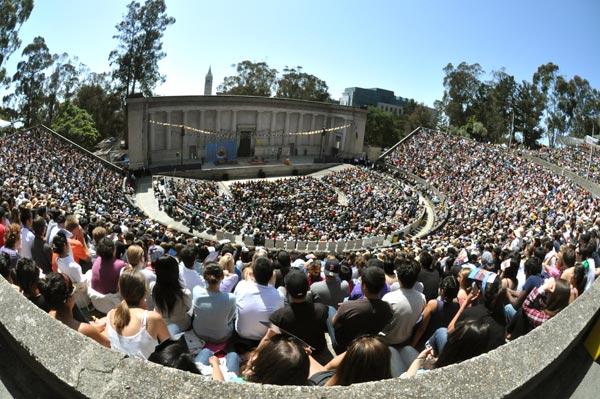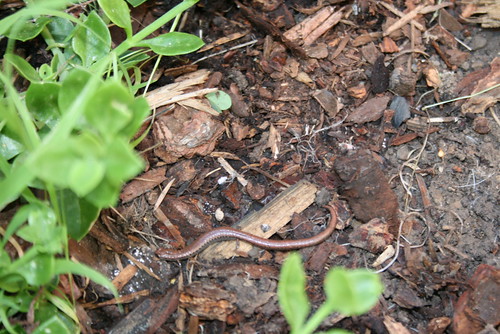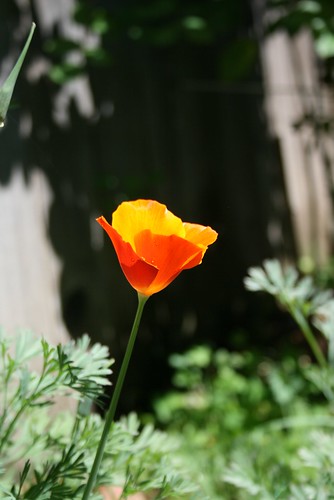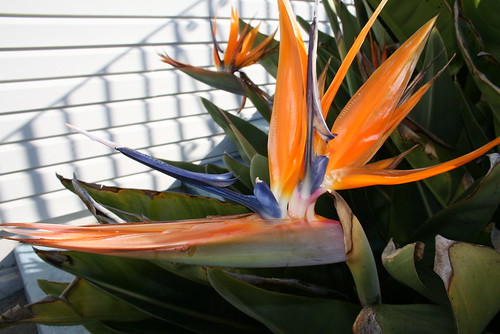
(Peg Skorpinski photo)
Dalai Lama: Creating a peaceful 21st century will take all 6 billion of us
, NewsCenter | 27 April 2009
BERKELEY — Whether history remembers the 21st century as happy or unhappy "is in your hands," the 14th Dalai Lama, Tenzin Gyatso, told the students at his much-anticipated campus appearance Saturday afternoon. "My generation belongs to the 20th century. You are the source of hope."
More than 7,000 people filled UC Berkeley's Hearst Greek Theatre to see and to hear the widely revered Dalai Lama, who spoke for close to an hour on the theme of "Peace Through Compassion." The exiled leader of Buddhist Tibet was awarded the 1989 Nobel Peace Prize for his long-standing advocacy of peaceful solutions to conflict. It was his reputation as a force for peace that was on many people's minds as they waited under a clear spring sky for the Dalai Lama to appear on stage.
"I'm definitely a peacenik; he represents peaceful solutions to me," said Susie Sheridan, payroll supervisor for Information Services & Technology. Tsering Khangtetsang, whose parents fled Tibet at mid-century in the wake of the Chinese crackdown, was there with her sister Tenzin. The two had seen His Holiness numerous times before, and they planned to catch his address to Himalayans, in downtown Berkeley, immediately following his appearance at the Greek. "Our leader is the only one who says do not fight violently; do not go to war," said Tsering.
 (Peg Skorpinski photos)
(Peg Skorpinski photos)Berkeley undergraduates were there in force — many having braved an overnight line to secure a ticket, back in early March; a large contingent hailed from the campus's Richard C. Blum Center for Developing Economies. Among them was fourth-year student Rachel Bramwell and fellow urban-studies major Matt Pruter. Both have done fieldwork in the developing world (she in Nairobi, he in Mumbai) as part of their studies on global poverty. "I'm here for him to tell us to become global citizens in the world," Pruter said of the Dalai Lama.
His Holiness did not disappoint. Sitting cross-legged in an armchair on the proscenium, beneath strings of fluttering Tibetan prayer flags, the 73-year-old monk called for conscious development of our human capacity for compassion. "Peace does not equal absence of problems," he said. Peace is when, despite "disagreement and the possibility for open conflict," people exercise restraint and will power to "seek ways to solve it" without coming to blows.
While the Dalai Lama touched on Buddhist understandings of reality, on animal behavior, and the mind-body connection, his signature humility and comic timing were in play, in spontaneous asides on his childhood aversion to caterpillars and his difficulty finding the right words in English. ("As I become older, my English becomes older," he declared.) One visitor, Associate Professor of Public Policy Jane Mauldon, described His Holiness as "extraordinarily available, disarmingly human, and very intimate."
It was the Dalai Lama's second appearance at the Greek Theatre, his third at UC Berkeley (he visited in 1997 and 1994). He was introduced by Chancellor Robert Birgeneau and by actress Sharon Stone, a board member of the American Himalayan Foundation, which co-sponsored the event with the Blum Center.
Prior to the talk and in the presence of the Dalai Lama, Birgeneau presented Blum, a Cal alum and chair of the UC Board of Regents, with the campus's highest award, the Berkeley Medal, in honor of his contributions to the campus and the university. The chancellor noted that he had bestowed a Berkeley Medal just two days before, on former vice president Al Gore, during a groundbreaking ceremony for the Blum Center's new headquarters. Blum, an investment banker and husband to Senator Dianne Feinstein, established the Center for Developing Economies in 2006 with a $15 million gift.
In accepting the Berkeley Medal, Blum called the day "a merger of the two things I care most about: UC and the Tibetan people and their plight."
Only a month ago, on the 50th anniversary of China's crackdown on Tibet, the Dalai Lama sharply criticized the People's Republic of China, saying its leaders had turned Tibet into a "hell on Earth" for the Tibetan people. It was Blum — who became interested in the Tibetan cause in the 1960s and founded the American Himalayan Foundation — who uttered the only strongly worded criticism of the Chinese government at the Greek. "If they want to become a great nation," he said, they "also need to become a moral nation. What goes on in Tibet is just immoral."
The Dalai Lama ended his 2009 appearance at Berkeley on a high note — pulling from his cloth bag a blue and gold Cal visor, and donning it as the crowd sent him out with a final standing ovation.
 The full house at the Greek Theatre. (Peg Skorpinski photo)
The full house at the Greek Theatre. (Peg Skorpinski photo)







